Member states of NATO
NATO (North Atlantic Treaty Organization) is an international military alliance consisting of 31 member states from Europe and North America. It was established at the signing of the North Atlantic Treaty on 4 April 1949. Article 5 of the treaty states that if an armed attack occurs against one of the member states, it shall be considered an attack against all members, and other members shall assist the attacked member, with armed forces if necessary.[1] Article 6 of the treaty limits the scope of Article 5 to the islands north of the Tropic of Cancer, the North American and European mainlands, the entirety of Turkey, and French Algeria, the last of which is moot. Thus, an attack on Hawaii, Puerto Rico, French Guiana, the Falkland Islands, Ceuta or Melilla, among other places, would not trigger an Article 5 response.
.svg.png.webp)
Of the 31 member countries, 29 are in Europe and two are in North America. Between 1994 and 1997, wider forums for regional cooperation between NATO and its neighbors were set up, including the Partnership for Peace, the Mediterranean Dialogue initiative, and the Euro-Atlantic Partnership Council.
All members have militaries, except for Iceland, which does not have a typical army (but it does have a coast guard and a small unit of civilian specialists for NATO operations). Three of NATO's members are nuclear weapons states: France, the United Kingdom, and the United States. NATO has 12 original founding member states. Three more members joined between 1952 and 1955, and a fourth joined in 1982. After the end of the Cold War, NATO added 15 more members from 1999 to 2023.[2]
NATO currently recognizes Bosnia and Herzegovina, Georgia, Sweden, and Ukraine as aspiring members as part of their Open Doors enlargement policy.[3]

Founding members and enlargement
NATO was established on 4 April 1949 via the signing of the North Atlantic Treaty (Washington Treaty). The 12 founding members of the Alliance were: Belgium, Canada, Denmark, France, Iceland, Italy, Luxembourg, the Netherlands, Norway, Portugal, the United Kingdom, and the United States.[4]
The various allies all sign the Ottawa Agreement,[5] which is a 1951 document that acts to embody civilian oversight of the Alliance.[5][6]
Current membership consists of 31 countries. In addition to the 12 founding countries, four new members joined during the Cold War: Greece and Turkey (1952), West Germany (1955) and Spain (1982). In 1990, the territory of the former East Germany was added with the reunification of Germany. NATO further expanded after the Cold War, adding the Czech Republic, Hungary and Poland (1999), Bulgaria, Estonia, Latvia, Lithuania, Romania, Slovakia, and Slovenia (2004), Albania and Croatia (2009), Montenegro (2017), North Macedonia (2020), and Finland (2023).[4] Of the territories and members added between 1990 and 2023, all were either formerly part of the Warsaw Pact (including the formerly Soviet Baltic states) or territories of the former Yugoslavia except for Finland. No countries have left NATO since its founding.
Currently, the North Atlantic Treaty Organization now covers a total area of 27,131,087 km2 (10,475,371 sq mi), since the accession of Finland on 4 April 2023.
Membership aspirations
As of April 2023, four additional states have formally informed NATO of their membership aspirations: Bosnia and Herzegovina, Georgia, Sweden and Ukraine.[3]
- NATO members agreed at the 2008 Bucharest Summit that Georgia and Ukraine "will become members of NATO in the future".[7]
- Bosnia and Herzegovina was invited by NATO to join the Membership Action Plan (MAP) in April 2010.[7]
- In May 2022, Finland and Sweden simultaneously submitted official application letters to become NATO members.[8][9]
- Finland became a member on April 4, 2023.
- As of July 10, 2023, all members except Hungary and Turkey had ratified Sweden's accession protocol, with both committing to complete their approval by October.[10]
List of member states
The current members and their dates of admission are listed below.
| Flag | Map | Name | Capital | Accession[11] | Population[lower-alpha 1] | Area[13] | Military budget as %GDP 2020[14] | GDP 2020 USD[15] |
|---|---|---|---|---|---|---|---|---|
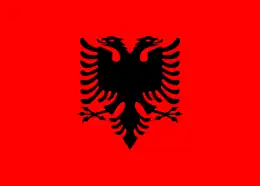 |
.svg.png.webp) |
Albania | Tirana | 1 April 2009 | 2,793,385 | 28,748 km2 (11,100 sq mi) | 1.5 | 15,131,866,271 |
.svg.png.webp) |
.svg.png.webp) |
Belgium | Brussels | 24 August 1949[lower-alpha 2] | 11,778,842 | 30,528 km2 (11,787 sq mi) | 1.1 | 521,676,942,135 |
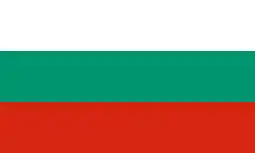 |
.svg.png.webp) |
Bulgaria | Sofia | 29 March 2004 | 6,919,180 | 110,879 km2 (42,811 sq mi) | 1.8 | 69,889,347,433 |
.svg.png.webp) |
.svg.png.webp) |
Canada | Ottawa | 24 August 1949[lower-alpha 2] | 38,943,231 | 9,984,670 km2 (3,855,103 sq mi) | 1.4 | 1,645,423,407,568 |
 |
.svg.png.webp) |
Croatia | Zagreb | 1 April 2009 | 3,901,833 | 56,594 km2 (21,851 sq mi) | 1.8 | 79,163,000,000 |
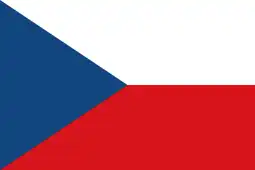 |
.svg.png.webp) |
Czech Republic[lower-alpha 3] | Prague | 12 March 1999 | 10,702,596 | 78,867 km2 (30,451 sq mi) | 1.4 | 245,339,322,067 |
 |
.svg.png.webp) |
Denmark[lower-alpha 4] | Copenhagen | 24 August 1949[lower-alpha 2] | 5,958,380 | 2,210,573 km2 (853,507 sq mi)[lower-alpha 5] | 1.4 | 356,084,867,686 |
 |
.svg.png.webp) |
Estonia | Tallinn | 29 March 2004 | 1,220,042 | 45,228 km2 (17,463 sq mi) | 2.3 | 30,650,285,472 |
 |
.svg.png.webp) |
Finland | Helsinki | 4 April 2023 | 5,566,000 | 338,455 km2 (130,678 sq mi) | 1.5 | 269,751,000,000 |
 |
.svg.png.webp) |
France[lower-alpha 6] | Paris | 24 August 1949[lower-alpha 2] | 68,084,217 | 643,427 km2 (248,429 sq mi) | 2.1 | 2,630,317,731,455 |
 |
.svg.png.webp) |
Germany[lower-alpha 7] | Berlin | 6 May 1955 (West Germany) 3 October 1990 (Germany) |
79,903,481 | 357,022 km2 (137,847 sq mi) | 1.4 | 3,846,413,928,654 |
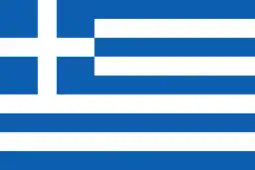 |
.svg.png.webp) |
Greece | Athens | 18 February 1952 | 10,569,703 | 131,957 km2 (50,949 sq mi) | 2.8 | 188,835,201,626 |
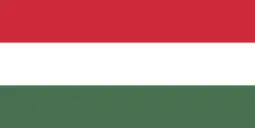 |
.svg.png.webp) |
Hungary | Budapest | 12 March 1999 | 9,728,337 | 93,028 km2 (35,918 sq mi) | 1.6 | 156,743,134,666 |
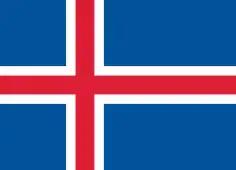 |
.svg.png.webp) |
Iceland | Reykjavík | 24 August 1949[lower-alpha 2] | 354,234 | 103,000 km2 (39,769 sq mi) | 0.0 | 21,718,075,725 |
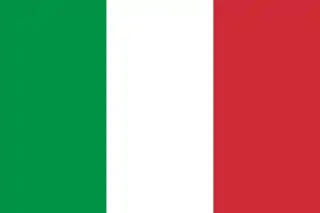 |
.svg.png.webp) |
Italy | Rome | 62,390,364 | 301,340 km2 (116,348 sq mi) | 1.6 | 1,892,574,064,222 | |
 |
.svg.png.webp) |
Latvia | Riga | 29 March 2004 | 1,862,687 | 64,589 km2 (24,938 sq mi) | 2.3 | 33,645,460,617 |
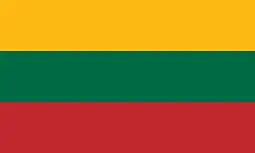 |
.svg.png.webp) |
Lithuania | Vilnius | 2,711,566 | 65,300 km2 (25,212 sq mi) | 2.1 | 56,546,957,475 | |
 |
.svg.png.webp) |
Luxembourg | Luxembourg | 24 August 1949[lower-alpha 2] | 639,589 | 2,586 km2 (998 sq mi) | 0.8 | 73,353,132,794 |
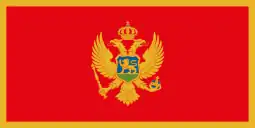 |
.svg.png.webp) |
Montenegro | Podgorica | 5 June 2017 | 607,414 | 13,812 km2 (5,333 sq mi) | 2.1 | 4,780,722,122 |
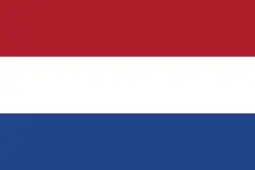 |
.svg.png.webp) |
Netherlands[lower-alpha 8] | Amsterdam | 24 August 1949[lower-alpha 2] | 17,337,403 | 41,543 km2 (16,040 sq mi)[lower-alpha 9] | 1.4 | 913,865,395,790 |
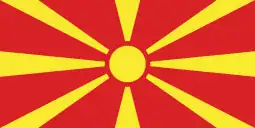 |
.svg.png.webp) |
North Macedonia | Skopje | 27 March 2020 | 2,128,262[lower-alpha 10] | 25,713 km2 (9,928 sq mi) | 1.3 | 12,116,981,815 |
 |
.svg.png.webp) |
Norway[lower-alpha 11] | Oslo | 24 August 1949[lower-alpha 2] | 5,509,591 | 323,802 km2 (125,021 sq mi)[note 1] | 1.9 | 362,198,318,435 |
 |
.svg.png.webp) |
Poland | Warsaw | 12 March 1999 | 38,185,913 | 312,685 km2 (120,728 sq mi) | 2.2 | 596,624,355,720 |
 |
.svg.png.webp) |
Portugal | Lisbon | 24 August 1949[lower-alpha 2] | 10,263,850 | 92,090 km2 (35,556 sq mi) | 2.1 | 228,539,245,045 |
 |
.svg.png.webp) |
Romania | Bucharest | 29 March 2004 | 21,230,362 | 238,391 km2 (92,043 sq mi) | 2.3 | 249,511,333,648 |
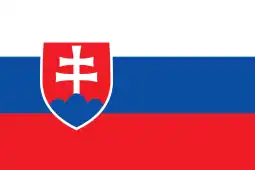 |
.svg.png.webp) |
Slovakia | Bratislava | 5,436,066 | 49,035 km2 (18,933 sq mi) | 1.8 | 105,172,564,492 | |
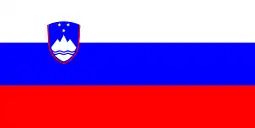 |
.svg.png.webp) |
Slovenia | Ljubljana | 2,102,106 | 20,273 km2 (7,827 sq mi) | 1.1 | 53,589,609,581 | |
 |
.svg.png.webp) |
Spain[lower-alpha 12] | Madrid | 30 May 1982 | 47,260,584 | 505,370 km2 (195,124 sq mi) | 1.4 | 1,281,484,640,044 |
 |
.svg.png.webp) |
Turkey[lower-alpha 13] | Ankara | 18 February 1952 | 82,482,383 | 783,562 km2 (302,535 sq mi) | 2.8 | 719,954,821,683 |
 |
.svg.png.webp) |
United Kingdom[lower-alpha 14] | London | 24 August 1949[lower-alpha 2] | 67,081,000 | 243,610 km2 (94,058 sq mi) | 2.2 | 2,756,900,214,107 |
.svg.png.webp) |
.svg.png.webp) |
United States[lower-alpha 15] | Washington, D.C. | 334,998,398 | 9,833,520 km2 (3,796,743 sq mi) | 3.7 | 20,893,743,833,000 |
Special arrangements
The three Nordic countries which joined NATO as founding members, Denmark, Iceland and Norway, chose to limit their participation in three areas: there would be no permanent peacetime bases, no nuclear warheads and no Allied military activity (unless invited) permitted on their territory. However, Denmark allowed the U.S. to maintain an existing base, Thule Air Base (now Pituffik Space Base), in Greenland.[17]
From the mid-1960s to the mid-1990s, France pursued a military strategy of independence from NATO under a policy dubbed "Gaullo-Mitterrandism".[18] Nicolas Sarkozy negotiated the return of France to the integrated military command and the Defence Planning Committee in 2009, the latter being disbanded the following year. France remains the only NATO member outside the Nuclear Planning Group and unlike the United States and the United Kingdom, will not commit its nuclear-armed submarines to the alliance.[19][20]
Military personnel
| Comparison of military personnel per 1,000 capita. |
50
100
150
200
250
300
Countries (see legend)
|
The following list is constructed from The Military Balance, published annually by the International Institute for Strategic Studies.
| Country[21] | Active | Reserve | Paramilitary | Total | Per 1,000 capita | ||
|---|---|---|---|---|---|---|---|
| total | active | ||||||
| Albania | 10,500 | 0 | 500 | 11,000 | 3.6 | 3.4 | |
| Belgium | 29,400 | 5,900 | 0 | 35,300 | 3 | 2.5 | |
| Bulgaria | 42,663 | 3,000 | 0 | 45,663 | 6.6 | 6.2 | |
| Canada | 70,500 | 35,600 | 5,500 | 111,600 | 2.9 | 1.9 | |
| Croatia | 16,700 | 21,000 | 3,000 | 40,700 | 9.7 | 4 | |
| Czech Republic | 27,400 | 4,200 | 0 | 31,600 | 3 | 2.6 | |
| Denmark | 20,440 | 45,800 | 0 | 66,240 | 11.2 | 3.5 | |
| Estonia | 7,600 | 230,000 | 15,800 | 253,400 | 207.7 | 6.2 | |
| Finland | 24,250 | 900,000 | 14,321 | 938,571 | 168.7 | 4.4 | |
| France | 208,750 | 141,050 | 175,050 | 524,850 | 7.7 | 3.1 | |
| Germany | 184,100 | 50,050 | 0 | 234,150 | 2.9 | 2.3 | |
| Greece | 143,300 | 221,350 | 4,000 | 368,650 | 34.8 | 13.5 | |
| Hungary | 41,600 | 20,000 | 12,000 | 73,600 | 7.6 | 4.3 | |
| Iceland | 250 | 250 | 250 | 750 | 2.1 | 0.7 | |
| Italy[lower-alpha 16] | 175,100 | 18,300 | 182,350 | 375,750 | 6 | 2.8 | |
| Latvia | 16,700 | 36,000 | 0 | 52,700 | 28.3 | 9 | |
| Lithuania | 23,000 | 90,000 | 14,150 | 127,150 | 46.9 | 8.5 | |
| Luxembourg | 940 | 0 | 600 | 1,540 | 2.4 | 1.5 | |
| Montenegro | 2,350 | 2,800 | 10,100 | 15,250 | 25.1 | 3.9 | |
| Netherlands | 41,543 | 6,643 | 6,500 | 54,686 | 3.2 | 2.4 | |
| North Macedonia | 8,000 | 26,850 | 7,600 | 42,450 | 19.9 | 3.8 | |
| Norway | 25,400 | 40,000 | 0 | 65,400 | 11.9 | 4.6 | |
| Poland | 164,500 | 200,000 | 75,400 | 439,900 | 11.5 | 4.3 | |
| Portugal | 33,200 | 211,700 | 24,700 | 269,600 | 26.3 | 3.2 | |
| Romania | 72,000 | 55,000 | 79,900 | 206,900 | 9.7 | 3.4 | |
| Slovakia | 19,500 | 0 | 0 | 19,500 | 3.6 | 3.6 | |
| Slovenia | 7,500 | 26,200 | 5,950 | 39,650 | 18.9 | 3.6 | |
| Spain | 133,282 | 15,450 | 75,800 | 224,532 | 4.8 | 2.8 | |
| Turkey | 640,811 | 378,700 | 156,800 | 1,176,311 | 14.3 | 7.8 | |
| United Kingdom | 196,453 | 78,600 | 0 | 275,053 | 4.2 | 3 | |
| United States | 1,456,870 | 870,760 | 0 | 2,327,630 | 6.9 | 4.3 | |
| NATO | 3,845,002 | 3,735,203 | 870,271 | 8,450,476 | 8.9 | 4 | |
Military expenditures
Military spending of the US compared to 29 other NATO member countries (all except Finland) (US$ millions).[lower-alpha 17]
Total military spending of NATO member countries except the United States and Finland (US$ millions).[lower-alpha 17][lower-alpha 19]
United States and Finland omitted - see above
The defence spending of the United States is more than double the defence spending of all other NATO members combined.[22] Criticism of the fact that many member states were not contributing their fair share in accordance with the international agreement by then US president Donald Trump caused various reactions from American and European political figures, ranging from ridicule to panic.[23][24][25]
| Member state | Population[lower-alpha 1] | GDP (nominal)[lower-alpha 20] |
Defence expenditure (US$)[lower-alpha 21] | Personnel[lower-alpha 21] | |||
|---|---|---|---|---|---|---|---|
| Total ($millions) | % real GDP | Per capita | Per 1,000 personnel ($millions) | ||||
| 3,074,579 | 20.18 | 198 | 1.26 | 58 | 29 | 6,800 | |
| 11,720,716 | 624.25 | 4,921 | 0.93 | 392 | 189 | 26,000 | |
| 6,966,899 | 100.64 | 1,079 | 1.61 | 132 | 43 | 25,000 | |
| 38,436,447 | 2,089.67 | 21,885 | 1.27 | 569 | 304 | 72,000 | |
| 4,227,746 | 78.89 | 1,072 | 1.75 | 238 | 71 | 15,000 | |
| 10,702,498 | 330.48 | 2,969 | 1.19 | 236 | 114 | 26,000 | |
| 5,869,410 | 405.63 | 4,760 | 1.35 | 760 | 280 | 17,000 | |
| 1,228,624 | 41.55 | 669 | 2.13 | 429 | 106 | 6,300 | |
| 5,566,000 | 301.67 | 4,046 | |||||
| 67,413,000 | 2,923.93 | 50,659 | 1.84 | 709 | 244 | 208,000 | |
| 84,543,512 | 4,308.85 | 54,113 | 1.36 | 591 | 294 | 184,000 | |
| 10,718,565 | 239.30 | 4,844 | 2.24 | 431 | 46 | 105,000 | |
| 9,771,827 | 188.51 | 2,080 | 1.21 | 178 | 104 | 20,000 | |
| 354,234 | 28.63 | — | — | — | — | — | |
| 60,317,116 | 2,169.75 | 24,482 | 1.22 | 385 | 137 | 179,000 | |
| 1,881,232 | 47.40 | 724 | 2.01 | 325 | 113 | 6,400 | |
| 2,731,464 | 78.35 | 1,084 | 2.13 | 336 | 53 | 21,000 | |
| 628,381 | 86.97 | 391 | 0.55 | 552 | 434 | 900 | |
| 609,859 | 7.03 | 92 | 1.65 | 126 | 58 | 1,600 | |
| 17,674,000 | 1,080.88 | 12,419 | 1.35 | 655 | 303 | 41,000 | |
| 2,125,971 | 15.28 | 108 | 1.09 | 51 | 15 | 7,200 | |
| 5,467,439 | 554.10 | 7,179 | 1.70 | 1,308 | 359 | 20,000 | |
| 38,282,325 | 748.89 | 11,971 | 2.01 | 296 | 97 | 123,000 | |
| 10,344,802 | 267.72 | 3,358 | 1.41 | 299 | 112 | 30,000 | |
| 21,302,893 | 348.90 | 5,043 | 2.04 | 225 | 73 | 69,000 | |
| 5,440,602 | 127.53 | 1,905 | 1.74 | 322 | 147 | 13,000 | |
| 2,102,678 | 68.11 | 581 | 1.04 | 253 | 85 | 6,800 | |
| 47,450,795 | 1,492.43 | 13,156 | 0.92 | 264 | 109 | 121,000 | |
| 83,614,362 | 1,029.30 | 13,919 | 1.89 | 225 | 32 | 435,000 | |
| 68,897,294 | 3,158.94 | 60,376 | 2.13 | 979 | 419 | 144,000 | |
| 334,233,854 | 26,854.60 | 730,149 | 3.42 | 2,072 | 546 | 1,338,000 | |
| 958,935,122 | 49,818.36 | 1,036,186 | 2.51 | 1,045 | 317 | 3,268,000 | |
Political and popular support
Pew Research Center's 2016 survey among its member states showed that while most countries viewed NATO positively, most NATO members preferred keeping their military spending the same. The response to whether their country should militarily aid another NATO country if it were to get into a serious military conflict with Russia was also mixed. Roughly half or fewer in six of the eight countries surveyed say their country should use military force if Russia attacks a neighboring country that is a NATO ally. And at least half in three of the eight NATO countries say that their government should not use military force in such circumstances. The strongest opposition to responding with armed force is in Germany (58%), followed by France (53%) and Italy (51%). More than half of Americans (56%) and Canadians (53%) are willing to respond to Russian military aggression against a fellow NATO country. A plurality of the British (49%) and Poles (48%) would also live up to their Article 5 commitment. The Spanish are divided on the issue: 48% support it, 47% oppose.[29][30]
Notes
- Population data is based on a July 2021 estimate by the Central Intelligence Agency in The World Factbook.[12]
- Founding member of NATO.
- Officially referred to by the name Czechia. (See Czech Republic#Name.)
- Denmark consists of Denmark proper, the Faroe Islands and Greenland.
- including Faroe Islands and Greenland.
- Excluding all overseas territories of France apart from Saint Pierre and Miquelon.
- Germany initially joined NATO as West Germany. The former country of East Germany became part of NATO after German reunification.
- Only the European part of the Kingdom of the Netherlands is part of NATO.
- Figure includes the islands of Bonaire, Saba and Sint Eustatius, but they don't fall under the NATO treaty.
- North Macedonia's population estimate was missing from Central Intelligence Agency's Country Comparison list in The World Factbook but available in the country's entry.[16]
- Excluding Bouvet Island.
- Excluding Ceuta and Melilla.
- Officially referred to by the name Türkiye. (See Name of Turkey.)
- Including Gibraltar and Bermuda. The crown dependencies and other overseas territories are excluded.
- Only includes the Contiguous United States, Alaska and Washington, D.C.. But Hawaii and the territories of the United States don't fall under the NATO treaty.
- The paramilitary forces of Italy consist of the Carabinieri and the Guardia di Finanza.
- Country order is the same as the preceding chart (military personnel per 1,000 capita) to maintain the same country colours between charts.
- Except Finland
- The pie chart format does not allow as many slices as there are countries in NATO, so the countries with the fewest military personnel per capita (Albania, Belgium, Czech Republic, Iceland and Luxembourg) have been combined into a single slice.
- Gross domestic product (nominal) data (in billions of US dollars) is based on an April 2023 issue of the World Economic Outlook, which is published by the International Monetary Fund.[27]
- Defence expenditure and personnel data are based on a June 2019 press release from NATO.[28]
References
- Citations
- "The North Atlantic Treaty". North Atlantic Treaty Organization. 4 April 1949. Retrieved 16 June 2008.
- Center, Notre Dame International Security (23 March 2023). "The Addition of NATO Members Over Time (1949-2023)". ND International Security Center. Retrieved 11 July 2023.
- "Enlargement and Article 10". NATO. 10 June 2022. Retrieved 1 July 2022.
Currently, five partner countries have declared their aspirations to NATO membership: Bosnia and Herzegovina, Finland, Georgia, Sweden and Ukraine.
- NATO. "Member countries". NATO. Retrieved 29 June 2022.
- Mosquera, Andrés B. Muñoz (2019). "The North Atlantic Treaty: Article 9 and NATO's Institutionalization". Volume 34. Emory International Law Review.
Really, the Agreement on the Status of the North Atlantic Treaty Organisation, National Representatives and International Staff signed in Ottawa
- "03. Agreement on the Status of the North Atlantic Treaty Organisation, National Representatives and International Staff, done at Ottawa September 20, 1951". US Department of State.
- NATO. "Enlargement and Article 10". NATO. Retrieved 29 June 2022.
- NATO. "Relations with Finland". NATO. Retrieved 29 June 2022.
- NATO. "Relations with Sweden". NATO. Retrieved 29 June 2022.
- Sanger, David E.; Erlanger, Steven; Hubbard, Ben; Jakes, Lara (10 July 2023). "Turkey Clears the Way for Sweden's Entry to NATO on the Eve of Summit". The New York Times. ISSN 0362-4331. Archived from the original on 11 July 2023. Retrieved 11 July 2023.
- "Member countries". NATO. 4 October 2022. Archived from the original on 9 October 2022. Retrieved 6 November 2022.
- "Country Comparisons — Population". Central Intelligence Agency. Retrieved 1 January 2022.
- "Field Listing :: Area". Central Intelligence Agency. Archived from the original on 31 January 2014. Retrieved 3 March 2011.
- "Military expenditure by country as percentage of gross domestic product, 1949-2020" (XLSX). Stockholm International Peace Research Institute. 26 April 2021. Retrieved 6 May 2021.
- "DataBank: World Development Indicators". World Bank. Retrieved 14 December 2022.
- "North Macedonia — People and Society". Central Intelligence Agency. Retrieved 1 January 2022.
- "Denmark and NATO - 1949".
- "Why the concept of Gaullo-Mitterrandism is still relevant". IRIS. 29 April 2019. Archived from the original on 7 March 2022. Retrieved 7 March 2022.
- Cody, Edward (12 March 2009). "After 43 Years, France to Rejoin NATO as Full Member". The Washington Post. Archived from the original on 26 October 2017. Retrieved 19 December 2011.
- Stratton, Allegra (17 June 2008). "Sarkozy military plan unveiled". The Guardian. UK. Archived from the original on 7 March 2016. Retrieved 17 December 2016.
- The International Institute for Strategic Studies (February 2022). The Military Balance 2022. London: Routledge. ISBN 978-1-032-27900-8. ISSN 0459-7222.
- Where Does The Relationship Between NATO And The U.S. Go From Here?, Huffington Post
- NATO allies boost defense spending in the wake of Trump criticism, The Washington Post
- Former US ambassador to Nato in withering criticism of Donald Trump, The Independent
- Shaken by Trump's Criticism of NATO, Europe Mulls Building Own Military Force, Voice Of America
- "SIPRI Military Expenditure Database". SIPRI The independent resource on global security. STOCKHOLM INTERNATIONAL PEACE RESEARCH INSTITUTE.
- "GDP, current prices". International Monetary Fund. Retrieved 11 July 2023.
- "Defence Expenditure of NATO Countries (2012-2019)" (PDF). NATO. 25 June 2019. Retrieved 30 March 2020.
- Support for NATO is widespread among member nations, Pew Research
- U.S. would defend NATO despite Trump's criticism, Europeans believe: study, Reuters
- Bibliography
- International Institute for Strategic Studies (14 February 2018). The Military Balance 2018. London: Routledge. ISBN 9781857439557.
